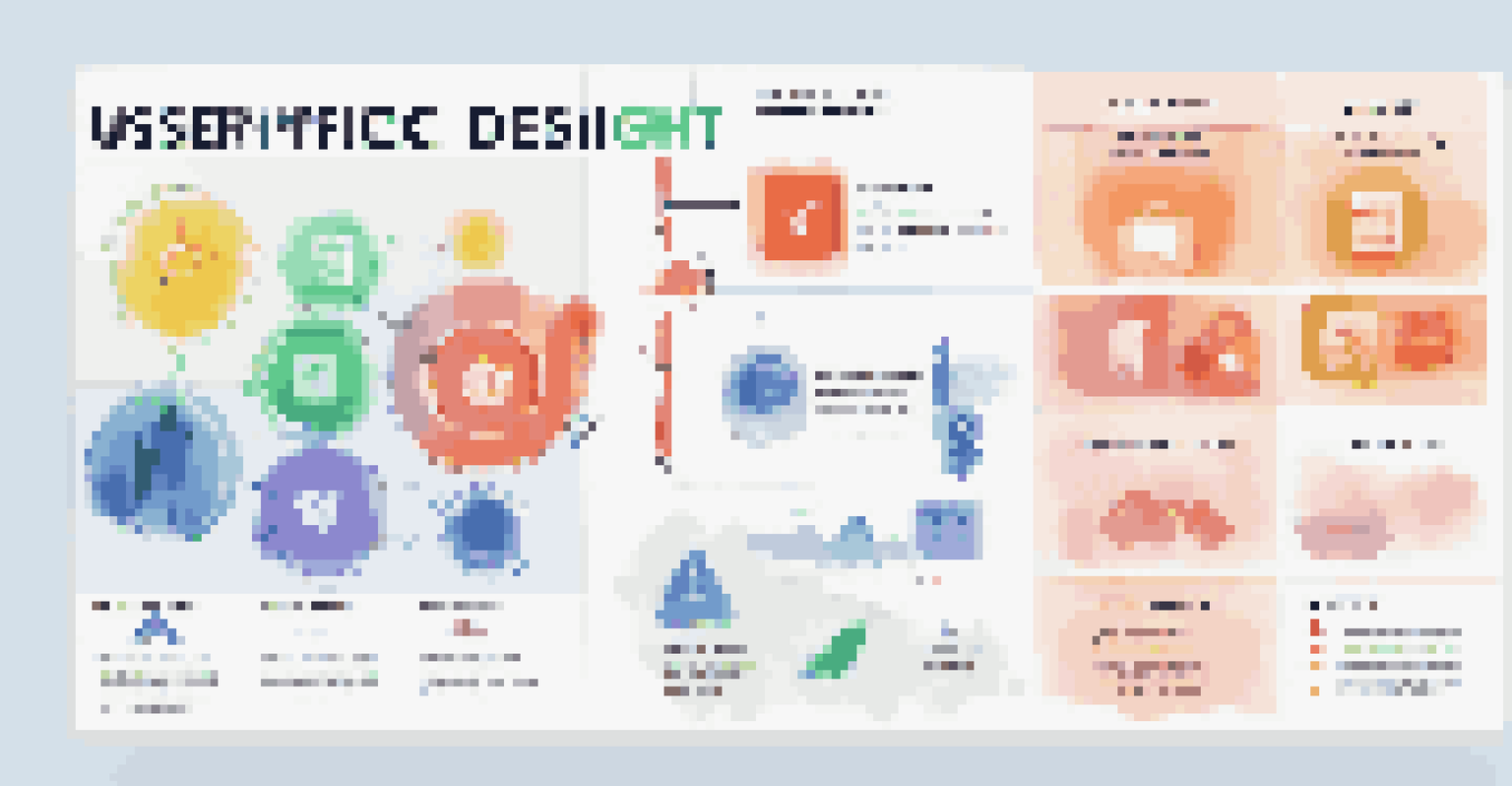The Importance of User Experience in Digital Assessment Platforms

Understanding User Experience in Digital Assessments
User experience (UX) is all about how users interact with a digital platform. In the context of digital assessment platforms, it refers to how easy and enjoyable it is for users—students, teachers, and administrators alike—to complete assessments. A positive UX can significantly influence user satisfaction and performance.
Design is not just what it looks like and feels like. Design is how it works.
When users find a platform intuitive and engaging, they are more likely to stay focused and perform better. Conversely, a confusing interface can lead to frustration and errors, which can skew assessment results. This highlights the importance of designing platforms with the user in mind.
By prioritizing UX, developers can create assessments that not only gauge knowledge effectively but also foster a sense of comfort and confidence in users. This sets the stage for meaningful evaluation and feedback.
The Impact of UX on Learning Outcomes
A well-designed user experience can directly affect learning outcomes. For example, if students can easily navigate through a digital assessment, they can focus on answering questions rather than struggling with the interface. This clarity can lead to improved performance.

Research shows that when learners feel comfortable with the technology they use, their motivation and engagement levels increase. A positive UX encourages students to explore and invest more time in their studies, which ultimately enhances their learning experience.
Thus, enhancing user experience isn't just about aesthetics; it's about creating an environment that supports education and learning. When students succeed due to better UX, everyone benefits.
Accessibility: A Key Component of UX
Accessibility is an essential aspect of user experience, particularly in digital assessment platforms. This means ensuring that all users, regardless of their abilities, can effectively access and navigate the platform. For example, incorporating screen readers and keyboard navigation options can be crucial for users with visual impairments.
The best way to predict the future is to create it.
When platforms are designed with accessibility in mind, they not only comply with legal standards but also widen their user base. This inclusivity allows for a more diverse range of students to demonstrate their knowledge fairly.
Creating an accessible user experience ultimately contributes to a more equitable educational environment. When everyone has the same opportunity to succeed, it reflects positively on the educational institution as a whole.
User Feedback: The Heart of UX Improvement
Collecting user feedback is essential for improving user experience in digital assessment platforms. By asking users about their experiences, developers can identify pain points and areas for enhancement. This could be as simple as a survey after an assessment or more structured usability testing.
Listening to users not only helps pinpoint issues but also fosters a sense of community and collaboration. When users feel heard, they are more likely to engage and provide constructive feedback that can lead to valuable improvements.
Incorporating user feedback into the design process ensures that the platform evolves to meet the needs of its users. This iterative approach to UX design leads to a more effective and satisfying digital assessment experience.
Design Principles for Effective UX
Effective user experience is grounded in design principles that prioritize usability and aesthetics. Key principles include simplicity, consistency, and feedback. For instance, a simple layout helps users navigate with ease, while consistent design elements reinforce familiarity.
Using clear, concise language and intuitive icons can also enhance usability. These elements make it easier for users to understand the interface, reducing the likelihood of errors during assessments.
Moreover, providing timely feedback—such as confirmation messages or error alerts—can help users feel more in control. By adhering to these design principles, developers can create digital assessment platforms that are not just functional but also enjoyable to use.
The Role of Technology in Enhancing UX
Advancements in technology play a significant role in improving user experience on digital assessment platforms. Features like adaptive learning algorithms and AI-driven insights can tailor assessments to individual user needs, creating a more personalized experience. This means students can work at their own pace and level.
Additionally, mobile-friendly designs and responsive layouts allow users to access assessments from various devices. This flexibility ensures that users can engage with the platform wherever they are, making learning more accessible.
Ultimately, embracing technology can transform the way assessments are conducted, leading to more effective and enjoyable user experiences.
The Future of User Experience in Digital Assessments
As digital assessments continue to evolve, so too will the focus on user experience. Emerging trends, such as gamification and immersive technologies like virtual reality, are set to change how assessments are designed and delivered. These innovations can make assessments more engaging and interactive, leading to better retention of information.
Moreover, as educational institutions increasingly recognize the importance of a positive user experience, there will be a greater demand for platforms that prioritize user needs. This shift could lead to more resources being allocated to UX research and development.

In conclusion, the future of user experience in digital assessment platforms looks promising. By focusing on creating enjoyable, accessible, and effective experiences, we can enhance the way assessments support learning.